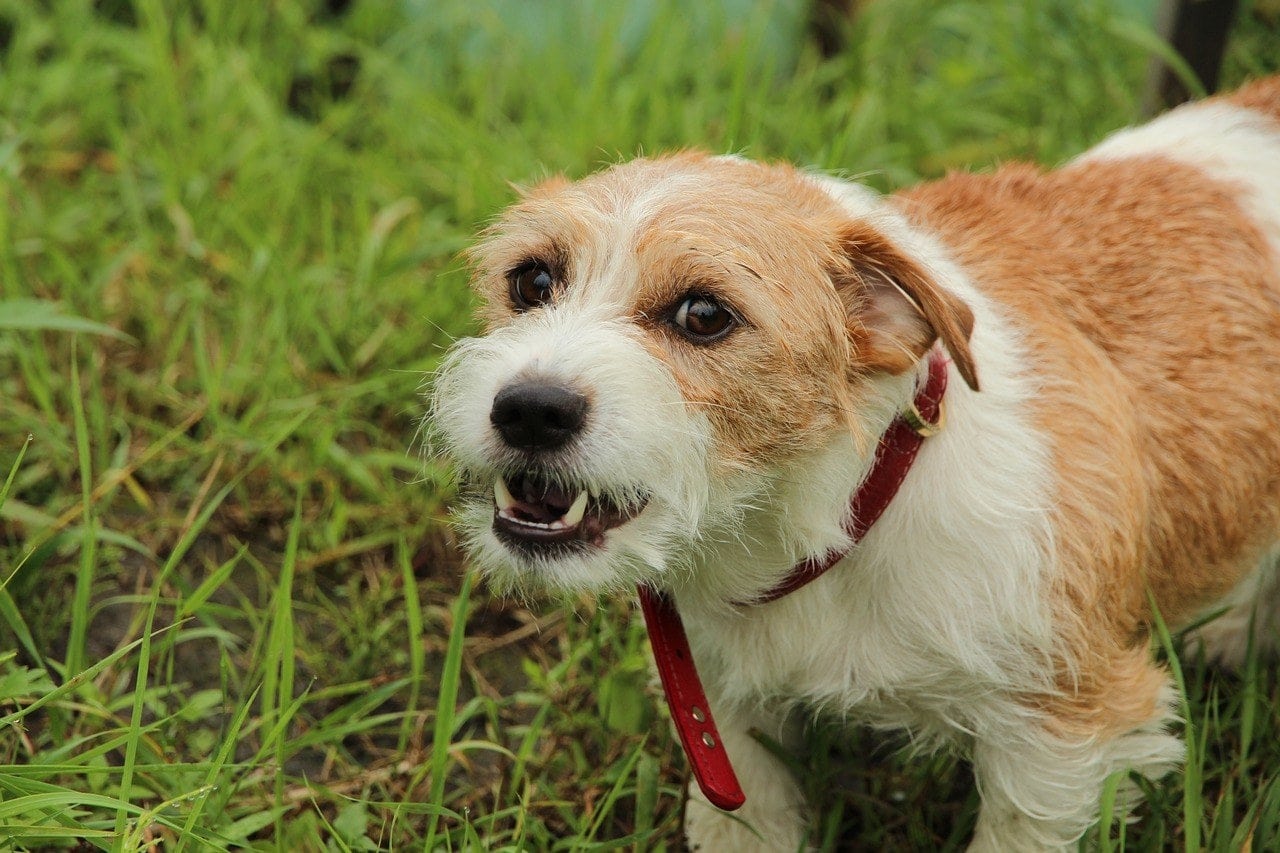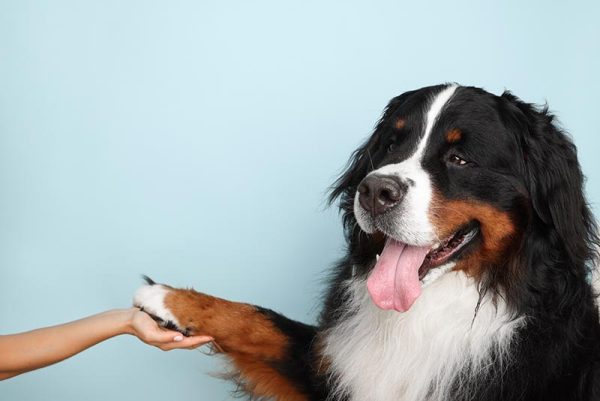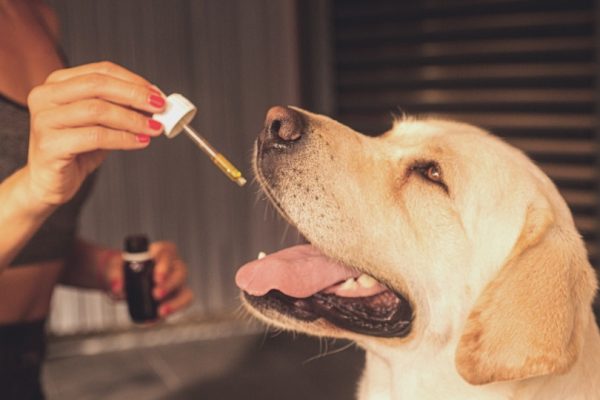Aggression is one of the most commonly cited reasons that a person gives up their dog. When your dog is acting aggressive, it can be downright scary, not to mention dangerous. The last thing you want is to be attacked by your dog. But often, the aggression your dog is displaying is due to some underlying cause that you just don’t understand. More often than not, that underlying cause is simply fear. Your dog is acting aggressively because they are afraid, not because they are plain evil.
But how can you know when your dog is acting aggressively out of fear and not for some other reason? And once you know you’re dealing with fear aggression, how can you prevent it, and what are the triggers? We’re about to cover all these topics and more so that you’re fully prepared to handle it if you think your dog is acting out of fear aggression.

What Is Fear Aggression in Dogs?
Fear aggression, also called anxiety-related aggression, is one of the most common types of aggression in dogs, which means that if your dog is being aggressive, there’s a good chance that it’s fear-based aggression. This type of aggression could result in defensive or offensive mannerisms and body language, which can make it a bit confusing to deal with.
Fear-based aggression happens because your dog is afraid of something. They could be afraid of something new or something that’s been bothering them for some time. Essentially, something is activating your dog’s fight or flight response, which is causing them to get into fight mode. In some of the scenarios, they probably would flee instead, but if that’s not an option, the next best thing is to fight, which your dog is trying to display that they’re willing to do.
Since this type of aggression is caused by fear, it’s most common in places where dogs have unpleasant experiences. For example, fear aggression is pretty prevalent in dogs that are visiting the vet or being approached by a stranger. You’ll also often see dogs become very aggressive when cornered, which is definitely a form of fear aggression.
It’s important to understand that fear aggression doesn’t mean the dog is bad or there’s anything wrong with them. In fact, it might be a great dog that’s usually well behaved but is simply feeling very scared of something at the moment, which is causing them to act out of aggression in the hopes that they will keep away whatever they’re scared of.
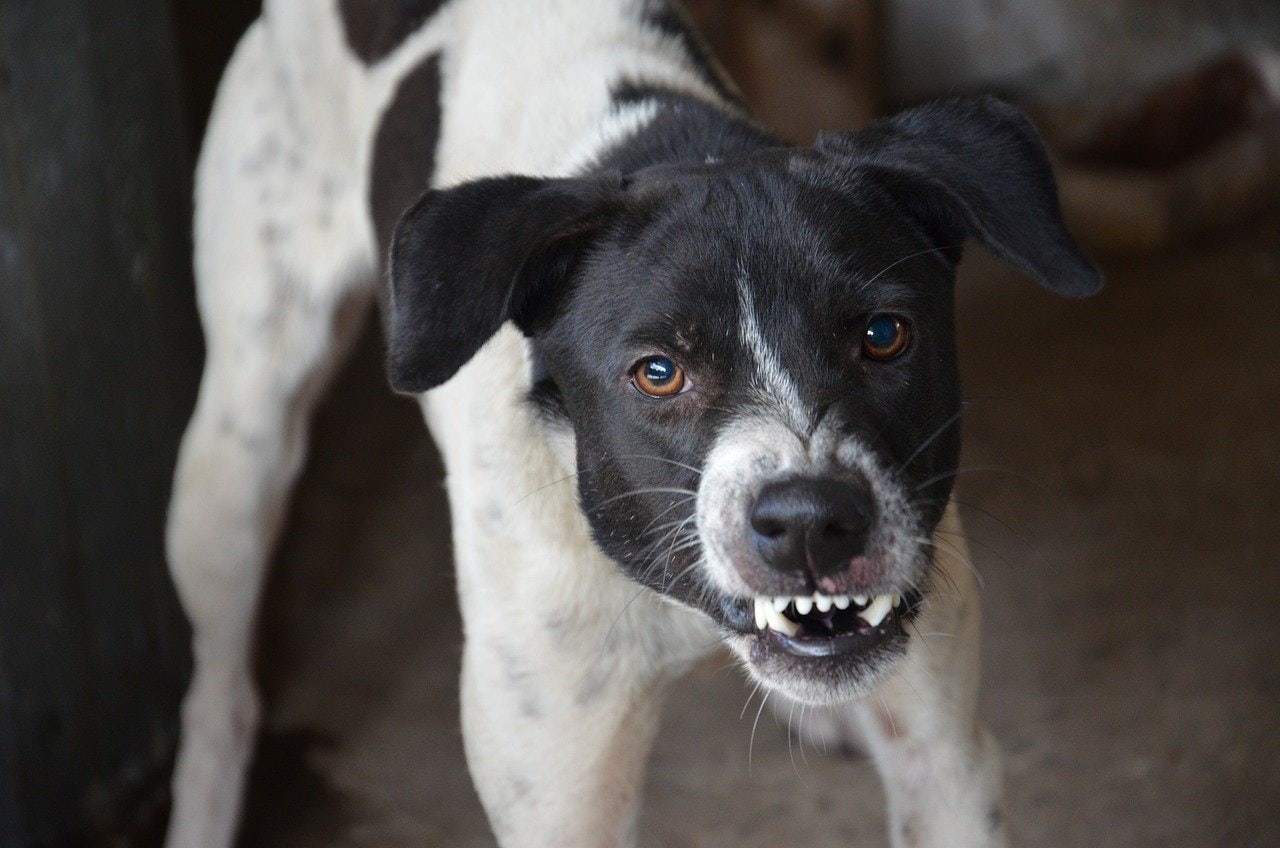
Triggers and Causes of Fear Aggression in Dogs
The biggest cause of fear aggression in dogs is poor socialization. If a dog is well socialized, then they’re comfortable in many situations and aren’t likely to experience fear aggression. Still, even for dogs that have been socialized often since they were young, certain situations can trigger a fear aggression response.
Pet behaviors can be caused by all kinds of things, but sometimes the source is medical. You can manage veterinary costs with the help of a pet insurance company like Lemonade, which offers adjustable plans and balanced coverage.
Being Trapped or Cornered
If your dog feels trapped or cornered, they begin to feel like aggression is the only option. They can no longer escape, so attacking is the next course of action. Caged and chained dogs will often become aggressive when someone approaches because they have nowhere to run. It’s the same for dogs backed into a corner.
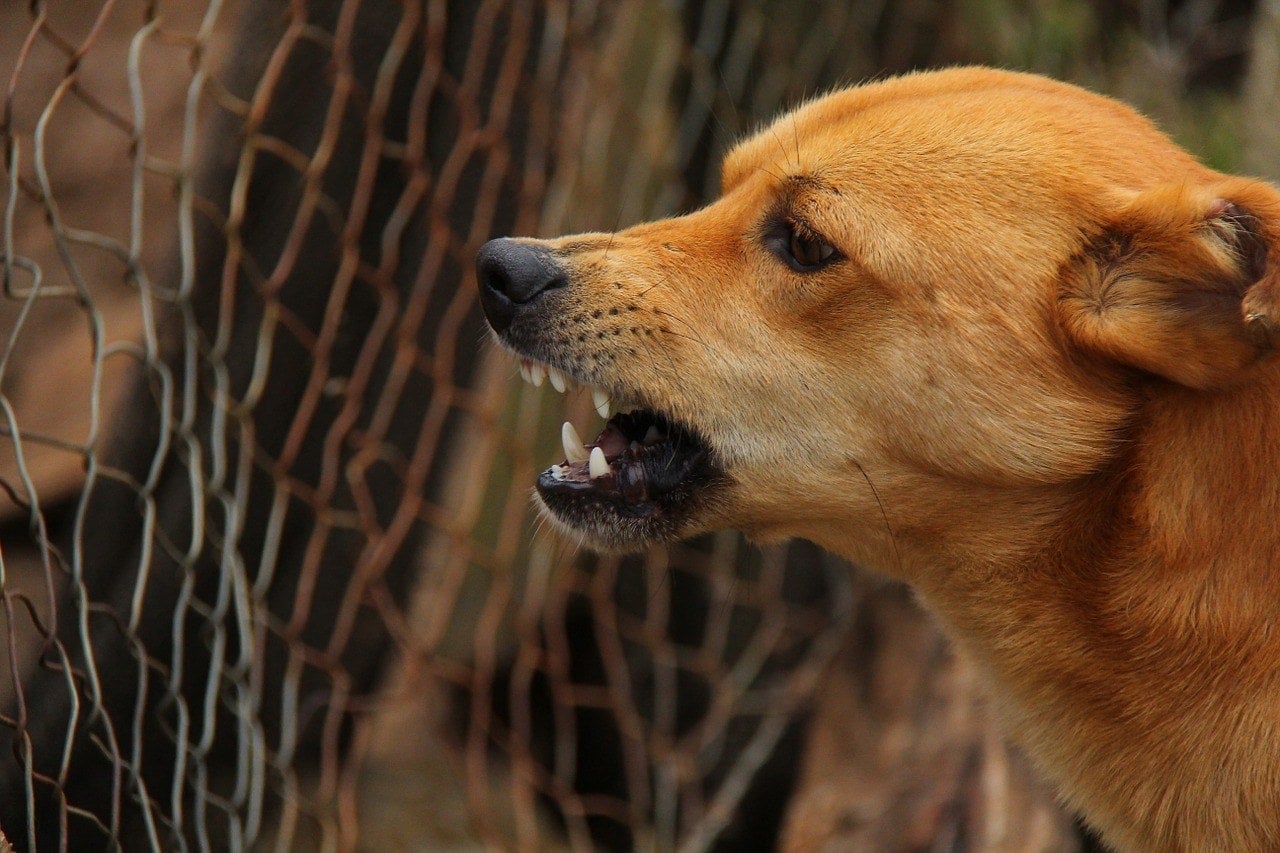
Interactions with Strangers
Whether it’s a dog or a person, if your dog doesn’t know or feel comfortable with who or what is approaching them, then they could react with aggression. This is why you should never approach a dog you don’t know. Even if you think you’re being friendly, the dog might not see it the same way, which means they could react with aggression out of fear.
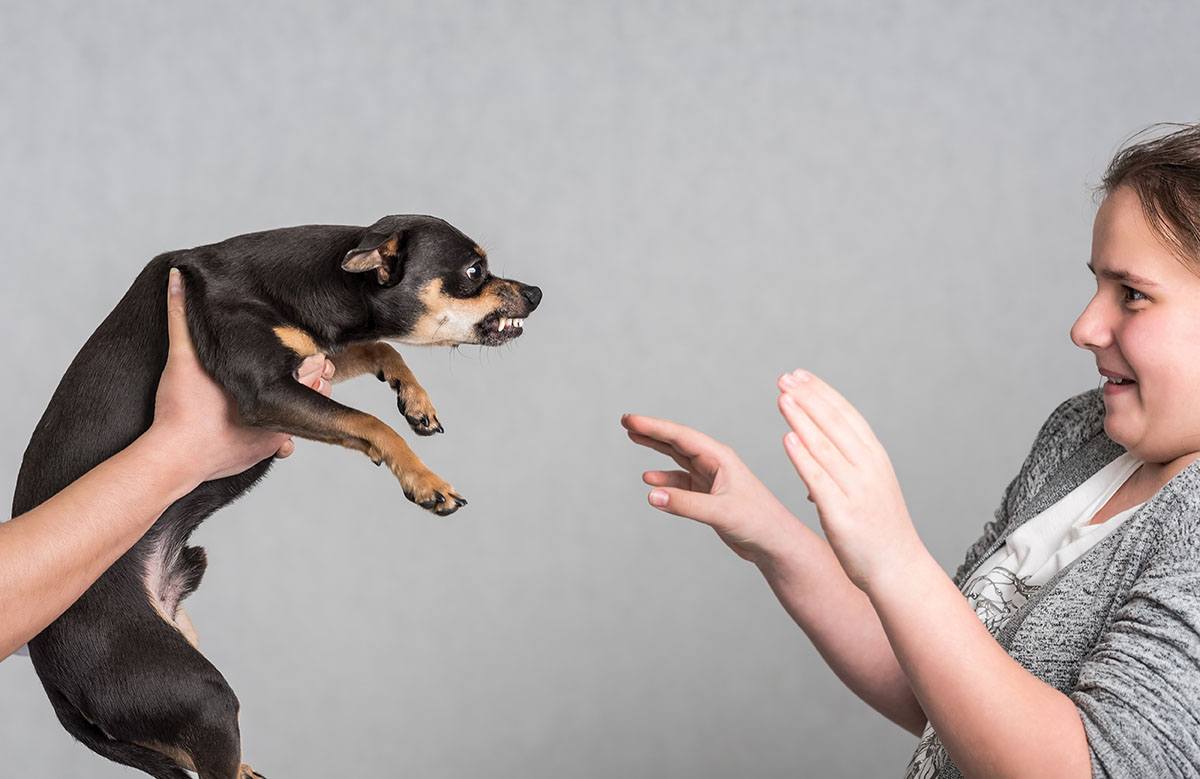
Places with Previous Bad Experiences
After having a bad experience somewhere, a dog is likely to associate a negative feeling with that place. Upon returning, the dog remembers the feeling they had before, which causes them to react from fear of experiencing the same negative feeling again. This is one of the reasons why many dogs act aggressively at the vet’s office.
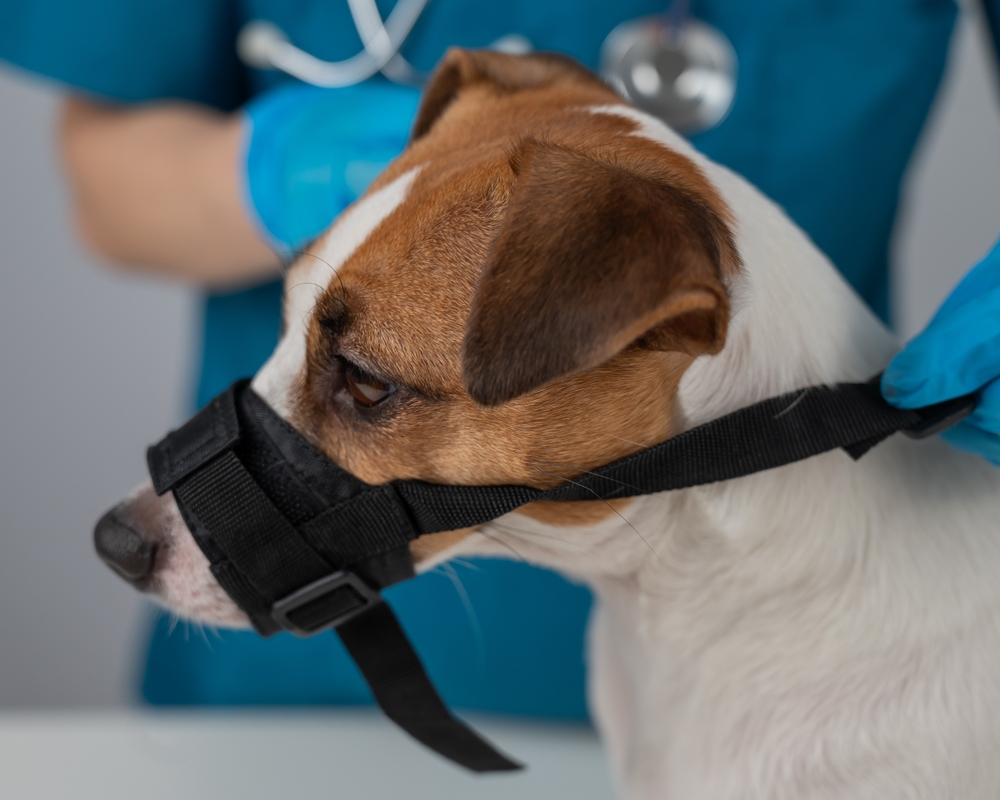
Sudden Movements and Loud Sounds
Even people get startled when something loud and unexpected jolts us or something moves quickly in our peripheral vision. Your dog is the same way, only worse. Those fast, sudden movements and loud sounds can really send your dog into a panic, and sometimes, the only way they know how to react is to be aggressive in hopes of keeping themself safe from whatever made the offending noise or movement.
Trauma From Past Suffering
Dogs with trauma from having suffered neglect, abuse, or other forms of physical pain are likely to be insecure and have a strong tendency to display fear-related aggression. These dogs often have a sense of mistrust and can flip at the slightest suspicion that something is wrong, even if nothing bad is really happening.

Signs That a Dog Is Acting Out of Fear Aggression
When a dog is acting aggressively out of fear, they will display several cues that can clue you into how they’re feeling. First, the dog will usually try to get away. Flight is generally preferred to fight. But if the dog can’t escape, they might begin making defensive movements or acting submissively. They may tuck their tail between their legs or lower their eyes, even crouching down to make themself appear smaller. You might notice them trembling or shaking while avoiding eye contact.
If the first signs are ignored, the dog might move into more serious signs. They might begin barking loudly, growling, showing their teeth, and snapping their jaws together. You could see the hackles rise up and the dog may snarl. If you see these signs, you should just back away as the dog is trying to communicate that they’re ready to attack out of fear. The next step will be a bite, which you don’t want to experience.
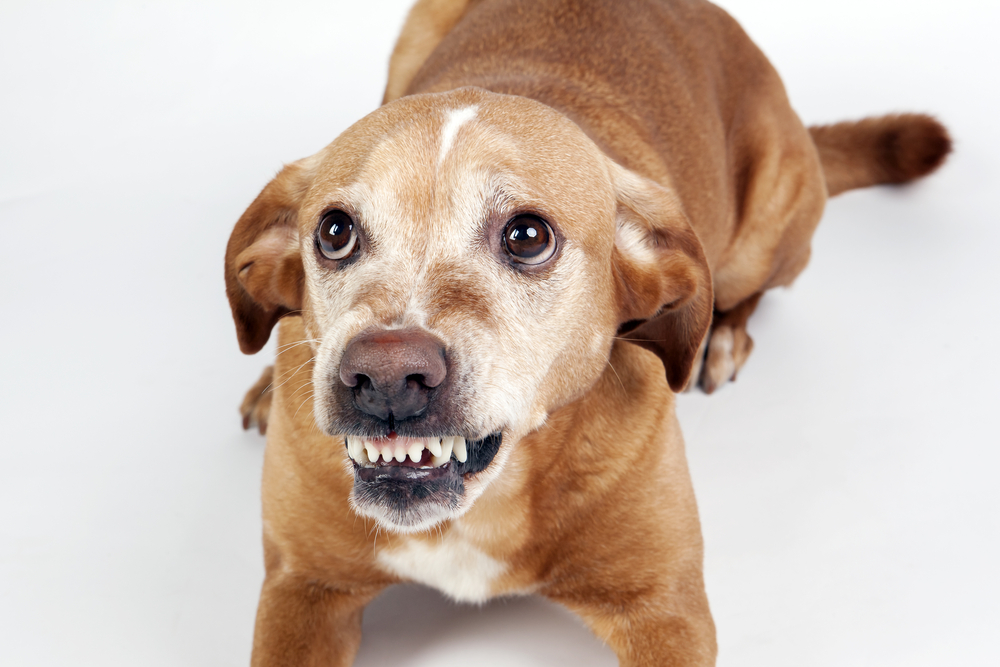
How to Prevent or Manage Fear Aggression
If your dog is acting out of fear and aggression, then you’ll need to be careful not to make things worse accidentally. You need to calm your dog down and show them that they’re safe by doing the following:
- Determine how close you can get before your dog starts to show signs of fear aggression and stay that far away while they’re acting aggressively.
- When letting your dog out of the kennel, open the door and back away so they don’t feel cornered.
- Don’t reach for your dog’s collar, as this can easily result in a bite with a fear-aggressive dog.
- Avoid strong eye contact as this signals dominance to your dog.
- Ensure there’s enough of everything that your dog never has to fight for their share, including food, toys, treats, and more.
- Avoid tug-of-war games with fear-aggressive dogs as these can make the problems worse. Instead, play fetch with these dogs.
- Pet your dog on their sides or chest rather than their head. A hand coming down towards their head can be perceived as a threat and is more likely to incur a bite.
- Gradually desensitize your dog to different situations and environments to help them build up their confidence.
- Do not hesitate to reach out to a professional trainer to help you make a management plan and understand how to help your dog. You will learn a lot about your dog’s triggers and specific behavioral modification techniques that you can apply to help your dog.
- Take the necessary safety measurement to prevent any accidents, avoid walking your dog off leash, and consider a muzzle when necessary.
- Ensure your dog is healthy and free from pain and discomfort and from injury or illness, as the trigger could be that.
- Take your dog through positive reinforcement-based obedience training to help them gain the confidence necessary to stop acting out of fear aggression. A veterinarian can teach you some great training techniques.
If you need to speak with a vet but can't get to one, head over to PangoVet. It's an online service where you can talk to a vet online and get the personalized advice you need for your pet — all at an affordable price!


Conclusion
Fear aggression is just one of many forms that aggression can take, but it’s the most common type of aggression that dogs display. Remember, your dog is only acting out of fear. They are not a bad dog, and if you follow the tips we’ve just covered, you should be able to help your dog feel more comfortable and put an end to their fear aggression.
Looking for other types of dog aggression? Try:
Featured Image Credit: Pixabay

